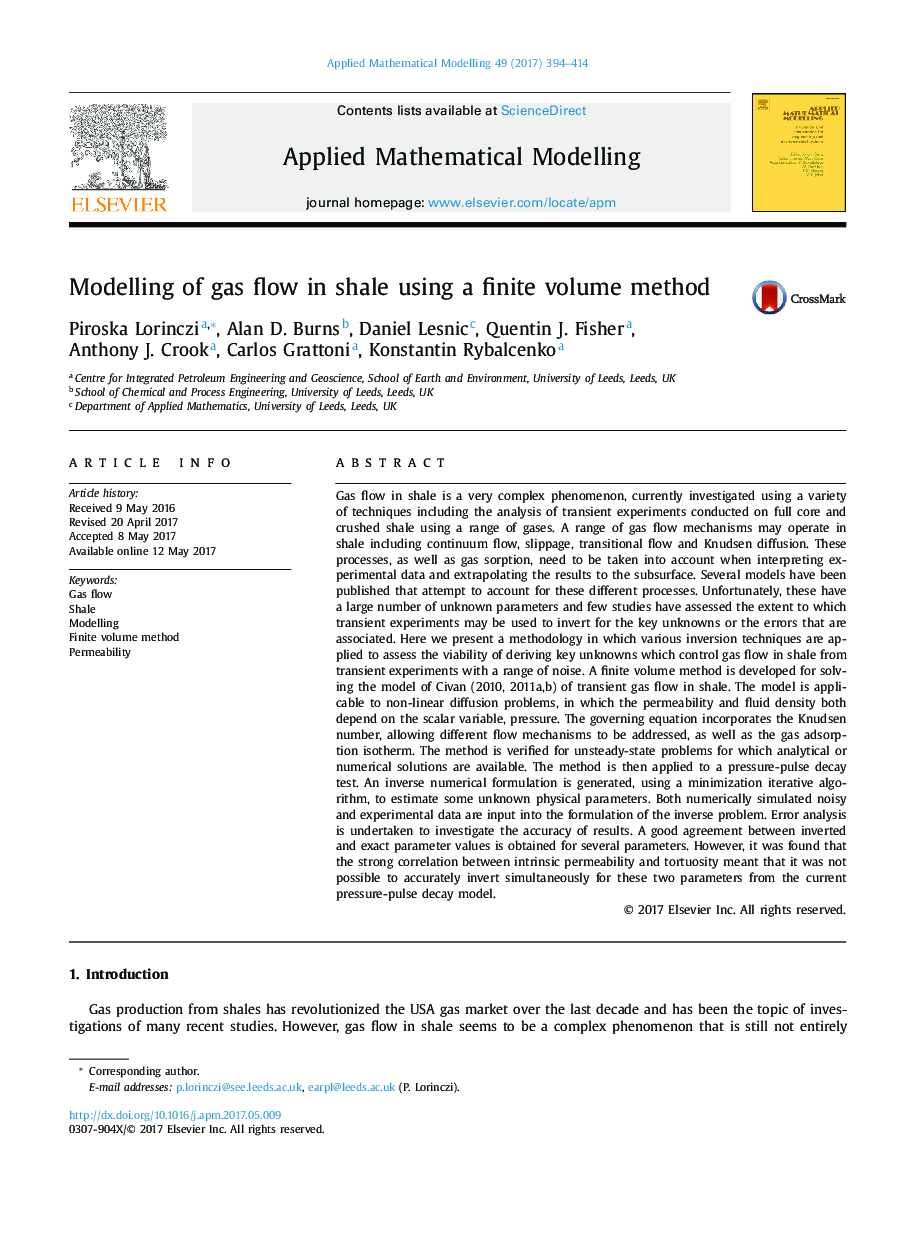| کد مقاله | کد نشریه | سال انتشار | مقاله انگلیسی | نسخه تمام متن |
|---|---|---|---|---|
| 5471100 | 1519384 | 2017 | 21 صفحه PDF | دانلود رایگان |
عنوان انگلیسی مقاله ISI
Modelling of gas flow in shale using a finite volume method
ترجمه فارسی عنوان
مدل سازی جریان گاز در شیل با استفاده از روش حجم محدود
دانلود مقاله + سفارش ترجمه
دانلود مقاله ISI انگلیسی
رایگان برای ایرانیان
کلمات کلیدی
جریان گاز، شیل، مدل سازی، روش حجم محدود نفوذپذیری،
موضوعات مرتبط
مهندسی و علوم پایه
سایر رشته های مهندسی
مکانیک محاسباتی
چکیده انگلیسی
Gas flow in shale is a very complex phenomenon, currently investigated using a variety of techniques including the analysis of transient experiments conducted on full core and crushed shale using a range of gases. A range of gas flow mechanisms may operate in shale including continuum flow, slippage, transitional flow and Knudsen diffusion. These processes, as well as gas sorption, need to be taken into account when interpreting experimental data and extrapolating the results to the subsurface. Several models have been published that attempt to account for these different processes. Unfortunately, these have a large number of unknown parameters and few studies have assessed the extent to which transient experiments may be used to invert for the key unknowns or the errors that are associated. Here we present a methodology in which various inversion techniques are applied to assess the viability of deriving key unknowns which control gas flow in shale from transient experiments with a range of noise. A finite volume method is developed for solving the model of Civan (2010, 2011a,b) of transient gas flow in shale. The model is applicable to non-linear diffusion problems, in which the permeability and fluid density both depend on the scalar variable, pressure. The governing equation incorporates the Knudsen number, allowing different flow mechanisms to be addressed, as well as the gas adsorption isotherm. The method is verified for unsteady-state problems for which analytical or numerical solutions are available. The method is then applied to a pressure-pulse decay test. An inverse numerical formulation is generated, using a minimization iterative algorithm, to estimate some unknown physical parameters. Both numerically simulated noisy and experimental data are input into the formulation of the inverse problem. Error analysis is undertaken to investigate the accuracy of results. A good agreement between inverted and exact parameter values is obtained for several parameters. However, it was found that the strong correlation between intrinsic permeability and tortuosity meant that it was not possible to accurately invert simultaneously for these two parameters from the current pressure-pulse decay model.
ناشر
Database: Elsevier - ScienceDirect (ساینس دایرکت)
Journal: Applied Mathematical Modelling - Volume 49, September 2017, Pages 394-414
Journal: Applied Mathematical Modelling - Volume 49, September 2017, Pages 394-414
نویسندگان
Piroska Lorinczi, Alan D. Burns, Daniel Lesnic, Quentin J. Fisher, Anthony J. Crook, Carlos Grattoni, Konstantin Rybalcenko,
